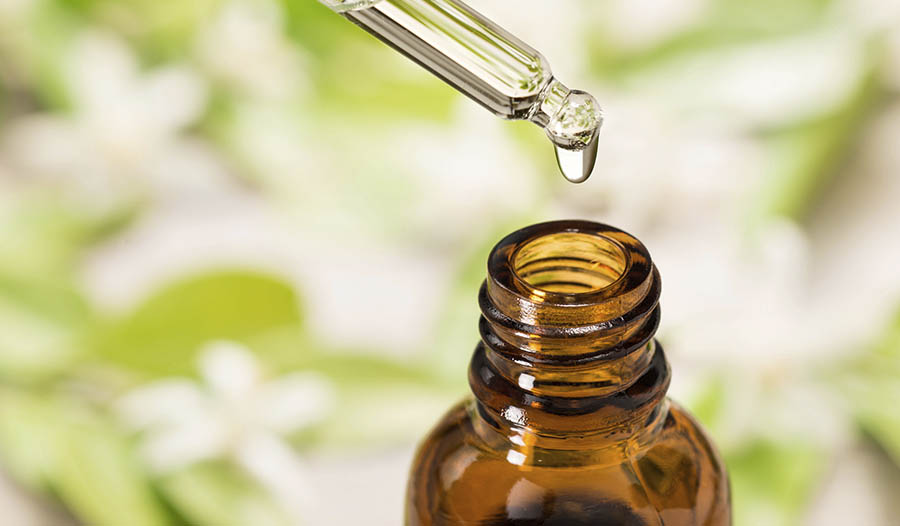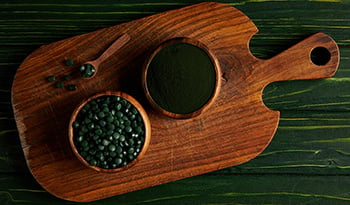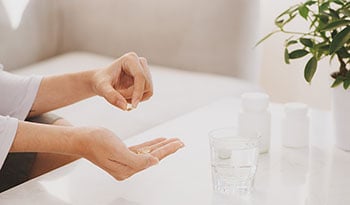What Is Colloidal Silver?
FERAGAT:Bu blog tanı koymayı hedeflememektedir...

Since the days of antiquity, humans have been throwing coins into water sources such as a well or fountain. Why? Well, wish making hasn't always been the motivation. One theory is that the antibacterial properties of silver were known, and this was done to make water safer to drink. These days, there is growing evidence that silver may also have many other health benefits, especially in the colloidal form, a solution in which silver nanoparticles are suspended in water.
Colloidal silver has become increasingly popular over the last few decades, but the health benefits of silver have been utilized for a millennium. The first believed use of silver for medical purposes was almost over 2,000 years ago—Hippocrates is said to have used silver to heal skin ulcers and wounds. During the 4th century, it was used by the Egyptians, and in 980 AD, Avicenna used silver to purify blood as well as treat heart palpitations and bad breath. In the 14th century, Conrad von Megenberg noted in Book of Nature that silver “slag”, when applied topically, could be used to treat scabies and bleeding hemorrhoids.
Hahnemann (1755-1843), the founder of homeopathic medicine, also used silver to treat medical conditions, including silver nitrate to help stop bleeding. Silver nitrate is still used today by doctors to stop mild bleeding after a dermatological procedure. However, if silver is taken in excess, a person’s skin can become blue in color, a condition doctors call argyria.
Prior to the advent of antibiotics, colloidal silver was a common treatment for infections. This therapy fell out of favor until the 1990s, when the risk of antibiotic resistance starting becoming a concern for many healthcare professionals.
How does colloidal silver work?
It is believed that silver nano-molecules enter bacteria and attach to certain bacteria proteins, causing them to change structure (denature) and become non-functional. Silver is also believed to bind to certain enzymes in viruses, fungi, and parasites, making them inactive.
Here are some possible benefits of colloidal silver:
Anti-bacterial
Since the advent of antibiotics in the 1940s, bacteria have become cleverer and have developed mechanisms to help protect themselves from antibiotic drugs. Bacteria form a type of “force shield” to protect themselves against the drugs designed to kill them—scientists call this shield a "biofilm". A 2014 study showed that colloidal silver could help disrupt the force shield that certain bacteria, like Staphylococcus aureus, creates. In addition, a 2011 study showed that silver particles could destroy bacteria directly by destroying their cell walls. A strong cell well is crucial for bacteria to reproduce. According to a 2018 study, silver may also kill some of the good bacteria in the gut so use of a probiotic should be considered if silver is taken routinely.
Anti-viral
Viruses are infectious agents for which modern medicine has limited treatment. The common cold still does not have a cure while medications that fight influenza simply reduce the amount of time one is ill by about one day. Antiviral alternatives are sought by many. A 2005 study in Journal of Nanobiotechnology showed silver could stop the HIV virus from binding to host cells. A 2013 study of the herpes virus showed that silver nanoparticles could also make the herpes virus less infectious. Silver has also been studied against other viruses. While these studies provide some hope for future treatments, colloidal silver should not be used as a method to prevent HIV or herpes infections.
Anti-fungal
Fungi are all around us. Some can be helpful and consumed as a food, like a mushroom. Others, however, can cause infection due to their overgrowth. Balance is the key. A 2016 study showed that silver had anti-fungal properties when tested at various concentrations.
Dental cavities
There are a few studies that suggest that colloidal silver may be helpful in the prevention of tooth cavities and reduce the risk of infection in those undergoing dental implants. Swishing a colloidal silver and water mixture in the mouth can be considered.
Wound healing/skin burns
Chronic wounds due to diabetes or burns present challenges for both patients and caretakers alike. Finding the best topical medication to apply is crucial to not only preventing infection but also to help speed up the healing process. A 2006 study concluded that silver “can be used on second-degree burn wounds and can decrease the risk of wound infection and speed up wound healing”. A 2009 study supported the use of silver in helping to heal second-degree skin burns. Topical silver salves are available for use.
Sinus health
Millions of people worldwide visit their doctors each year with complaints related to their sinuses, a term commonly used to describe what doctors refer to as paranasal sinuses. Hollow “caves” in the human skull, which are essentially absent in newborns but develop fully by around age eight, sinuses reach their full adult size by puberty.
Specific food avoidance, medications, minerals, vitamins, essential oils, and homeopathic remedies can all be considered as options to help one prevent allergies, nasal congestion, and ultimately infections of the sinus tract. Maintaining good sinus health is crucial to overall health and well-being. Use of colloidal silver spray for sinus infection prevention is sometimes used, with many claiming benefits. Some studies have shown potential benefit. However, studies proving overall effectiveness are lacking.
Sinus inflammation was not improved in a small 2017 study of 22 patients who use colloidal silver to help ease their sinus issues. More studies are needed before use of colloidal silver can be recommended for sinus infections and/or prevention. Learn more about other methods to maintain sinus health.
Silver used in hospitals
Urinary infections are a common hospital infection, especially when a Foley catheter is used to help one urinate. A 2017 study showed that silver-lined Foley urine catheters could prevent urine infections. Similarly, a 2017 study showed that certain intravenous (IV) tubing, when lined with silver, resulted in less bacterial infections in patients who were in the intensive care unit. Another study from the same study showed that yeast infections were also reduced in those with silver-lined intravenous (IV) catheters.
Silver toxicity
The maximum dose in total daily silver intake should not exceed 14 mcg/kg daily. Never take more than is recommended on the label of the product used. Rarely, when silver levels become elevated in the skin, an irreversible bluish-gray skin color called argyria can result. Most cases reported of this condition did not involve colloidal silver but involved homemade silver salts. Further, it should be noted that the Federal Drug Administration (FDA) does not consider colloidal silver to be safe. However, many advocates cite its long history of safety when used conservatively.
Can silver be used during pregnancy?
No studies have shown any harms, but it is probably best to avoid use during pregnancy and during breastfeeding unless your healthcare provider advises you otherwise.
Are there medication interactions?
Taking colloidal silver at the same time as certain medications can reduce absorption of the medications. These include antibiotics and the thyroid medication levothyroxine. However, no drug interaction is known.
Suggested doses for adults:
Topical
- Topical silver salve - use as directed
- Colloidal silver can also be applied to the skin and wounds
Oral Dosing
The dosing guidelines below are recommended in the 2013 book titled Colloidal Silver, The Natural Antibiotic
- Low dosage: 3-5 ppm once or twice per day for preventive purposes
- Moderate dosage: 25-30 ppm two to three times per day for up to two weeks for bacterial and viral infections
- High dose: 100 ppm once per day for up to seven days for fungal infections
* Taking more than 200 ppm is not advised, especially if taken for more than five days.
* For children, one-half the dose is usually advised. Check with your child's physician before administering.
Note: Due to silver’s antibacterial properties, when taken for long periods of time, beneficial bacteria in the gut may be affected. Taking probiotics should also be considered to help counteract this effect.
References:
- Hippocrates used Silver accessed March 11, 2018 http://hydrosolinfo.com/
- Accessed March 14, 2018 http://docs.anovahealth.com/argentyn23/historicalfactsonar23.pdf
- Int Forum Allergy Rhinol. 2014 Mar;4(3):171-5. doi: 10.1002/alr.21259. Epub 2014 Jan 15.
- Colloids Surf B Biointerfaces. 2011 May 1;84(1):88-96. doi: 10.1016/j.colsurfb.2010.12.020. Epub 2010 Dec 21.
- Bactericidal Effects of Silver Nanoparticles on Lactobacilli and the Underlying Mechanism
- Xin Tian, Xiumei Jiang, Cara Welch, Timothy R. Croley, Tit-Yee Wong, Chao Chen, Sanhong Fan, Yu Chong, Ruibin Li, Cuicui Ge, Chunying Chen, and Jun-Jie Yin ACS Applied Materials & Interfaces 2018 10 (10), 8443-8450 DOI: 10.1021/acsami.7b17274
- Elechiguerra JL, Burt JL, Morones JR, et al. Interaction of silver nanoparticles with HIV-1. Journal of Nanobiotechnology. 2005;3:6. doi:10.1186/1477-3155-3-6.
- Gaikwad S, Ingle A, Gade A, et al. Antiviral activity of mycosynthesized silver nanoparticles against herpes simplex virus and human parainfluenza virus type 3. International Journal of Nanomedicine. 2013;8:4303-4314. doi:10.2147/IJN.S50070.
- Crit Rev Microbiol. 2016;42(1):46-56. doi: 10.3109/1040841X.2013.879849. Epub 2014 Apr 22.
- Abdallah Mohamed Elgorban, Abd El-Rahim Mohamed El-Samawaty, Mohamed Abdallah Yassin, Shaban Rushdy Sayed, Syed Farooq Adil, Khaled Mohamed Elhindi, Marwa Bakri & Mujeeb Khan (2015) Antifungal silver nanoparticles: synthesis, characterization and biological evaluation, Biotechnology & Biotechnological Equipment, 30:1, 56-62, DOI: 10.1080/13102818.2015.1106339
- Pokrowiecki R, Mielczarek A, Zaręba T, Tyski S. Oral microbiome and peri-implant diseases: where are we now? Therapeutics and Clinical Risk Management. 2017;13:1529-1542. doi:10.2147/TCRM.S139795.
- Zhonghua Wai Ke Za Zhi. 2006 Jan 1;44(1):50-2.
- Journal Medical Association Thai. 2009 Oct;92(10):1300-5.
- Laryngoscope. 2006 Jul;116(7):1121-6. Silver and sinus infections
- Scott JR, Krishnan R, Rotenberg BW, Sowerby LJ. The effectiveness of topical colloidal silver in recalcitrant chronic rhinosinusitis: a randomized crossover control trial. Journal of Otolaryngology - Head & Neck Surgery. 2017;46:64. doi:10.1186/s40463-017-0241-z.
- Zhang X-F, Liu Z-G, Shen W, Gurunathan S. Silver Nanoparticles: Synthesis, Characterization, Properties, Applications, and Therapeutic Approaches. Yan B, ed. International Journal of Molecular Sciences. 2016;17(9):1534. doi:10.3390/ijms17091534.
- Biomaterials. 2013 Oct;34(32):7884-94. doi: 10.1016/j.biomaterials.2013.07.015. Epub 2013 Jul 19.
- Franco-Molina MA, Mendoza-Gamboa E, Sierra-Rivera CA, et al. Antitumor activity of colloidal silver on MCF-7 human breast cancer cells. Journal of Experimental & Clinical Cancer Research : CR. 2010;29(1):148. doi:10.1186/1756-9966-29-148.
- Faedmaleki F, H Shirazi F, Salarian A-A, Ahmadi Ashtiani H, Rastegar H. Toxicity Effect of Silver Nanoparticles on Mice Liver Primary Cell Culture and HepG2 Cell Line. Iranian Journal of Pharmaceutical Research : IJPR. 2014;13(1):235-242.
- Arch Toxicol. 2011 Jul;85(7):743-50. doi: 10.1007/s00204-010-0545-5. Epub 2010 Apr 29. Silver vs Lung Cancer cells.
- IET Nanobiotechnol. 2017 Aug;11(5):612-620. doi: 10.1049/iet-nbt.2016.0148. Silver lined foley catheters.
- J Intensive Care Med. 2017 Jan 1:885066617745034. doi: 10.1177/0885066617745034. [Epub ahead of print]
- Cobrado L, Silva-Dias A, Azevedo MM, Rodrigues A. Anti-Candida activity of antimicrobial impregnated central venous catheters. Antimicrobial Resistance and Infection Control. 2017;6:110. doi:10.1186/s13756-017-0269-x.
- Kwon HB, Lee JH, Lee SH, Lee AY, Choi JS, Ahn YS. A Case of Argyria Following Colloidal Silver Ingestion. Annals of Dermatology. 2009;21(3):308-310. doi:10.5021/ad.2009.21.3.308.
- Accessed https://www.fda.gov/ohrms/dockets/98fr/081799a.txt ; FDA does not consider Colloidal Silver to be safe.

 Kaynak: Dr. Eric Madrid, M.D.
Kaynak: Dr. Eric Madrid, M.D.


